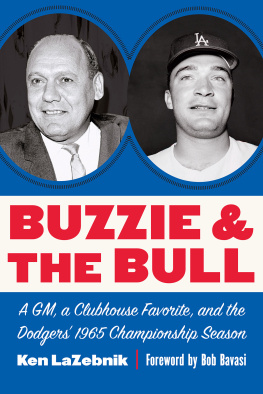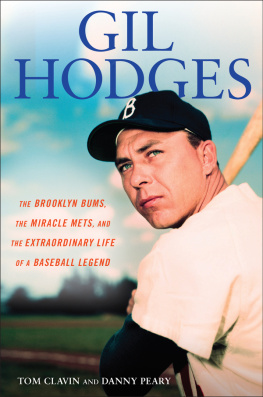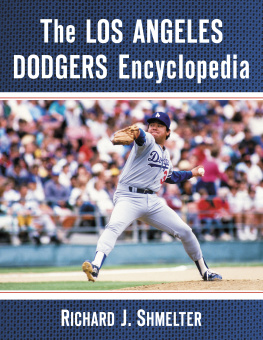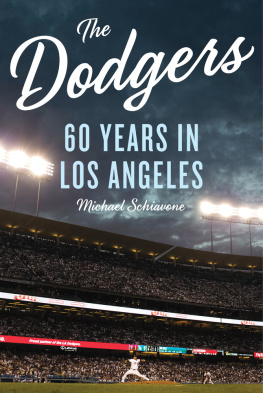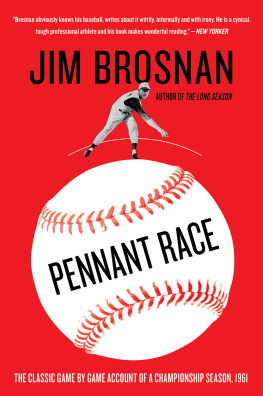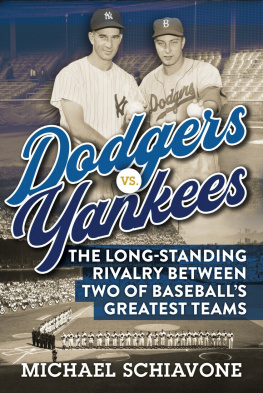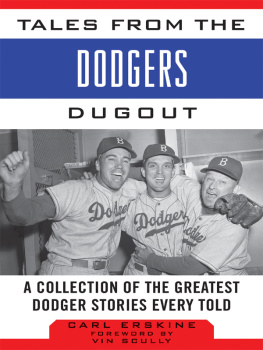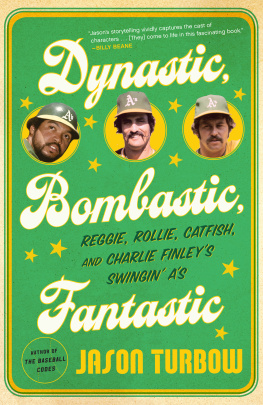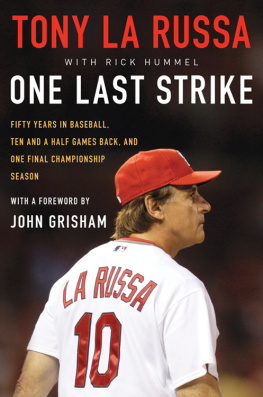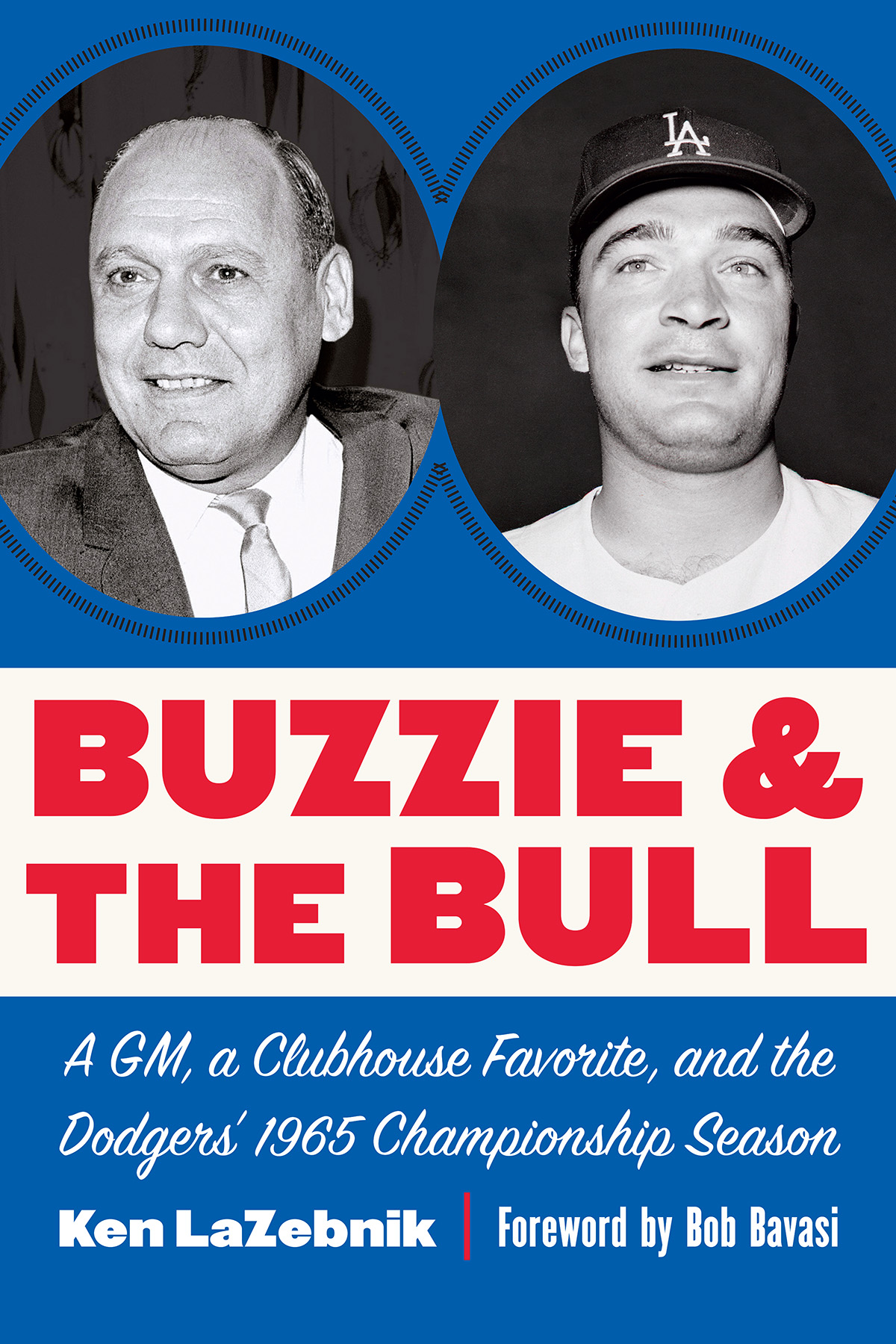
Buzzies ability to see intangibles gave him extraordinary insight into a players makeup, as evidenced in this delightful read of Al Ferrara, who played eight years in the big leagues.
Mike Port, former vice president and general manager of the California Angels and the Boston Red Sox
To memorable duos in baseball historyRuth and Gehrig, Spahn and Sain, and Abbott and Costellonow add Buzzie and the Bull. In Ken LaZebniks masterful hands this unlikely pairing of canny executive and rambunctious player comes alive with flair and fluency.
Lee Lowenfish, author of the award-winning biography Branch Rickey: Baseballs Ferocious Gentleman
Buzzie Bavasi was an unparalleled practitioner in the increasingly lost art of finding player talent that statistics fail to disclose, which helped win a pennant when he found it in Al Ferrara.
Bob Fontaine Jr., scouting director for the Toronto Blue Jays and former scout for the San Diego Padres, California Angels, and Seattle Mariners
Buzzie and the Bull
A GM , a Clubhouse Favorite, and the Dodgers 1965 Championship Season
Ken LaZebnik
Foreword by Bob Bavasi
University of Nebraska Press | Lincoln
2020 by Ken LaZebnik
Cover designed by University of Nebraska Press; cover images are from the interior.
All rights reserved.
Library of Congress Control Number: 2020001504
The publisher does not have any control over and does not assume any responsibility for author or third-party websites or their content.
To three beloved Dodger fans in my life:
my wife, Kate, and our sons, Jack and Ben
Contents
Bob Bavasi
Hes a good guy to have on the club.
And with that simple sentiment, Al the Bull Ferrara was again playing Major League Baseball.
It was 1971. I was in high school on spring break and about to walk back to the team hotel from the San Diego Padres spring training facility. My dad saw me and said, Wait with me. Ill be leaving soon.
I waited in the back corner of the conference room at Desert Sun Stadium in Yuma, Arizona, and watched something I had never seen: the coaches, scouts, and my dad, Buzzie Bavasi, who was the team president, making the club before breaking camp.
The better players made the team without discussion. Then came guys on the bubble. Whom to keep? Whom to release? For each of these players there were plenty of stat-filled, pointed, and sometimes heated arguments.
I had had no favorite player until a year earlier, when I decided to pledge my allegiance to the Bull. And the Bull was now next on the block. Would he make the club or finally have to get a real job?
Somebody said, Hes a good guy to have on the club. Then came a lot of head nodding. And that was that. For an eighth season, Al the Bull Ferrara was again in the big leagues. Five seasons with the Los Angeles Dodgers and now this, his third, with the San Diego Padres.
I was stunned. No stats. No arguments. No heated discussions. Nothing but a simple, Hes a good guy to have on the club got the Bull a spot in the big leagues.
They went over so many players in such great detail; why was there nothing of the sort with the Bull? If I had been at all inquisitive, I would have asked my dad on the drive back to the hotel. At the time I was not at all inquisitive.
Buzzie died on May 1, 2008. My oldest brother, Peter, took up the task of answering Dads correspondence. A year or so after Dads passing, Peter said to me, Ive been having a lot of fun keeping up with the players by email. And Ferrara is really something. He sends Mom a handwritten note each month.
What a guy, I said. You know hes my favorite player.
What! Peter said. You grew up around the DodgersKoufax, Drysdale, and the restand you pick Ferrara as your favorite player?
What can I say? I liked the Bull. He came off the bench hard. He was all business on the field. When I was around him, he made me feel like a million bucks, and I was just a kid walking through the clubhouse once in a while.
But what did Buzzie see in him to have him on eight of his teams? Buzzie was the president or general manager of every team on which the Bull started for those eight seasons. In baseball parlance these were Buzzies clubs. Buzzie made the final call on which players made the roster. Well, I suppose not the final call. For much of Buzzies baseball tenure that final say belonged to Walter OMalley, the Dodgers owner, who employed Buzzie to essentially play baseball cards for a living. As long as Buzzie adhered to the budget that Mr. OMalley set, he was free to make the roster. What a great deal.
So what was it about the Bull that kept him in the big leagues far longer than the average player? What kept him from falling off the bubble and out of the game? Was it his stats? Baseball has always been statistics-driven. The Dodgers had the best stats of their day. The first full-time statistician in the game, Allan Roth, was with the Dodgers, and he gave Buzzie the most exceptional statistics available. My father didnt ignore those stats. But stats by themselves are one-dimensional. They become far more useful when used by a skilled practitioner in the understanding of human nature and the intangible benefits that a player may offer.
Perhaps what kept the Bull in the big leagues was something intangible: a quality of his personality that encompassed nerves of steel, camaraderie, courage, and playing hard every moment he was on the field. These are the intangibles that caused his teammates to vote him a full World Series share in 1965, even when the Bull hadnt played a complete season.
Today, with baseballs obsession with statistical analysis and data-driven decision making, we may have lost the wisdom that comes from focusing not only on a players numbers, but also on his heart. The Bulls teammate, Ron Fairly, summed up what Al Ferrara brought to the 1965 Dodgersand what his general manager, my father, understood in his bones as he sought out players with the heart to win a championship: Theres no stat for that.
One can easily identify at least one game that Al Ferrara won for the Dodgers during the 1965 season. It was a key win in a season in which but two games made the difference between their clinching a pennant and their landing in another playoff. But how many wins were also nurtured by the intangibles that Ferrara brought to the clubhouse? How does one measure that?
This book chronicles a friendship between two very different men. But they were joined by a belief that baseball games are won not just by players who produce statistical success, but also by those who play the game with nerves of steel, with love, and with heart.
Bob Bavasi is responsible for the genesis of this book, introducing me to his favorite playerAl the Bull Ferraraand suggesting there was a book in the story of the Bulls unlikely friendship with his father, Dodger general manager Buzzie Bavasi. Bob has shepherded this project over the past several years in every way conceivable: arranging for over a year of interviews with Ferrara; bringing his brothers together to reminisce; gathering photographs; reaching out to the current Dodger organization; and working tirelessly in a hundred other ways. This book would not exist without him and the support of his wife, Margaret Bavasi, who compiled the beautiful letters that Buzzie mailed home from World War II. Peter Bavasi has been invaluable in his recollections, comments, and suggestions for improving the manuscript. Bill Bavasi and Chris Bavasi also made valuable suggestions and offered memories.
Next page
